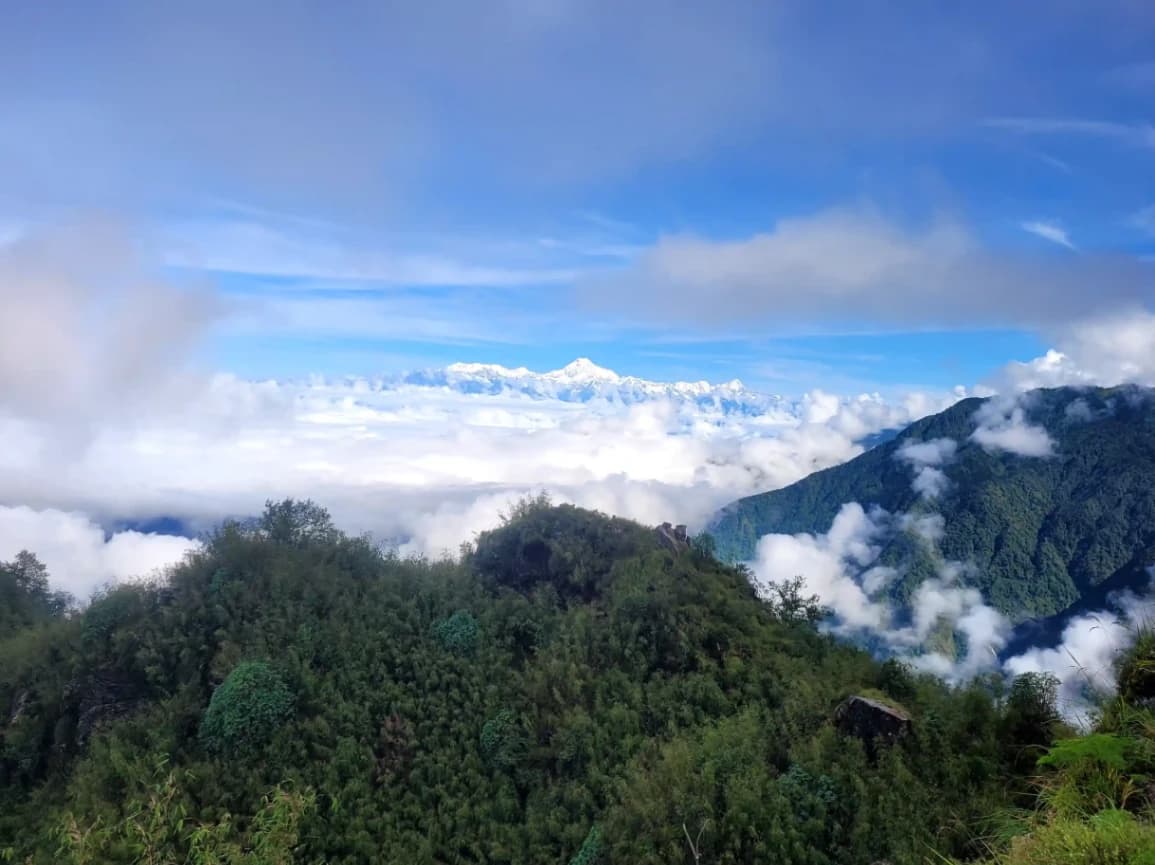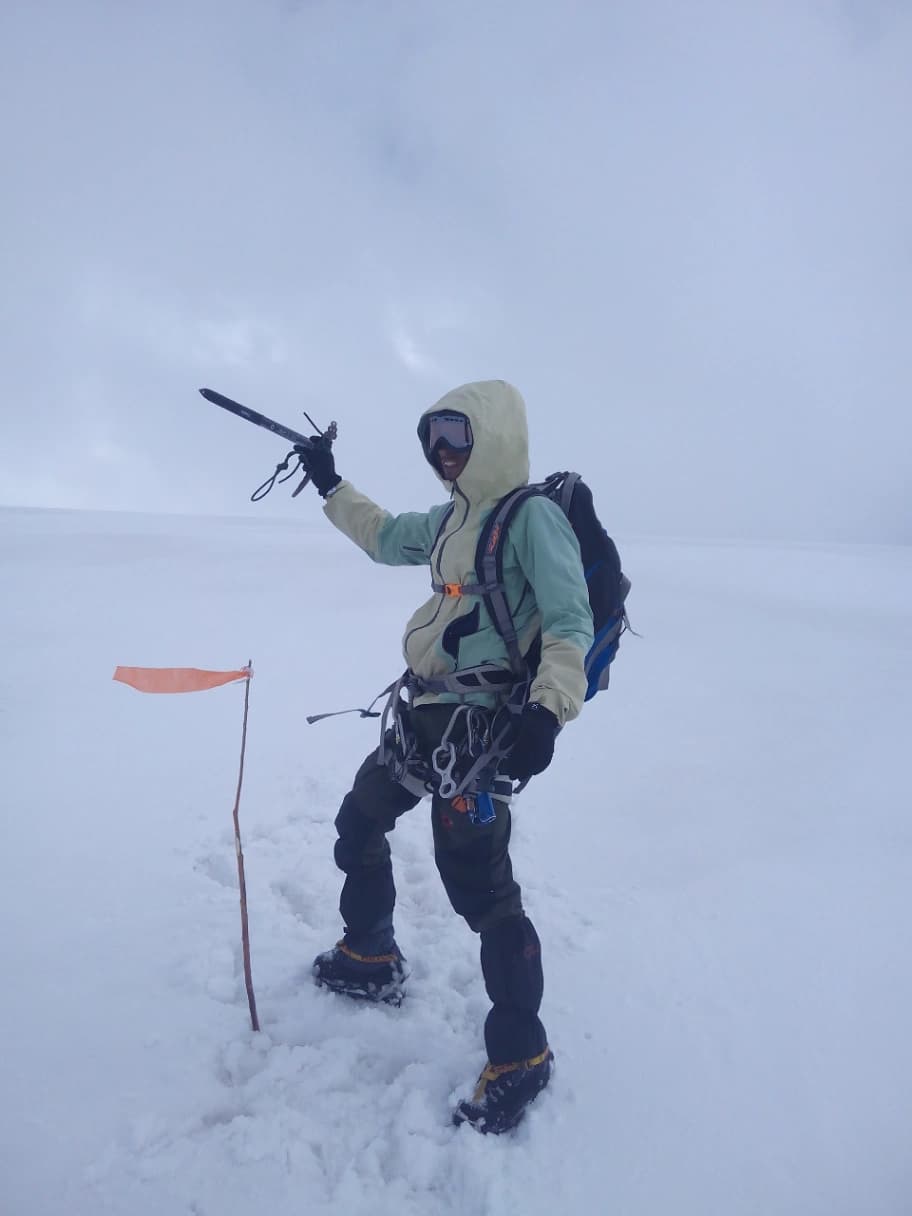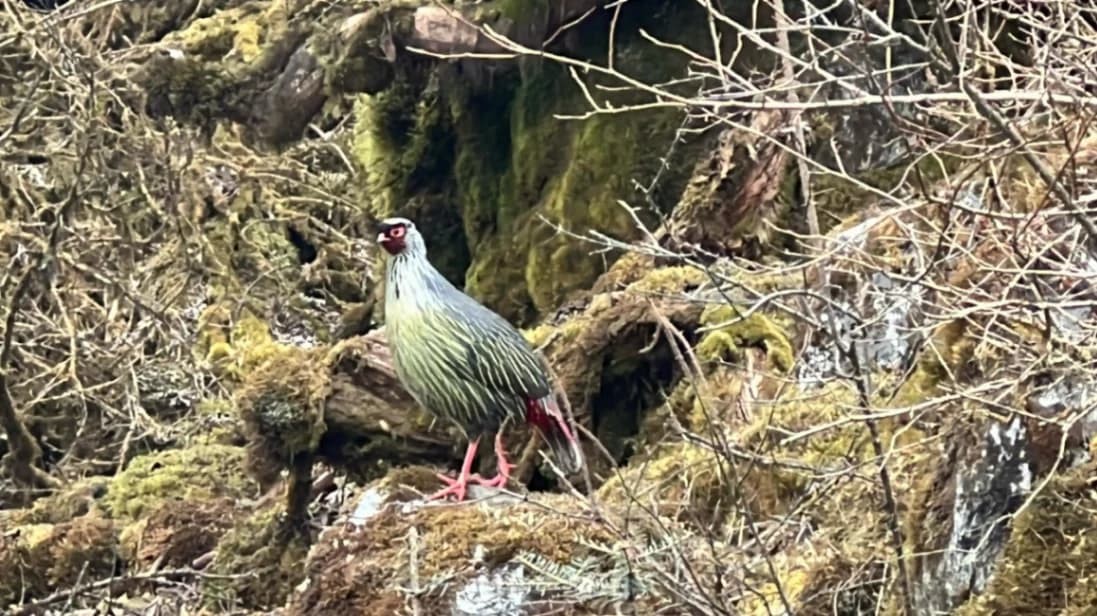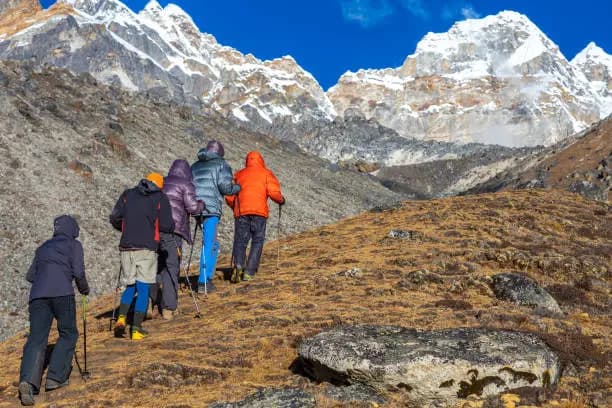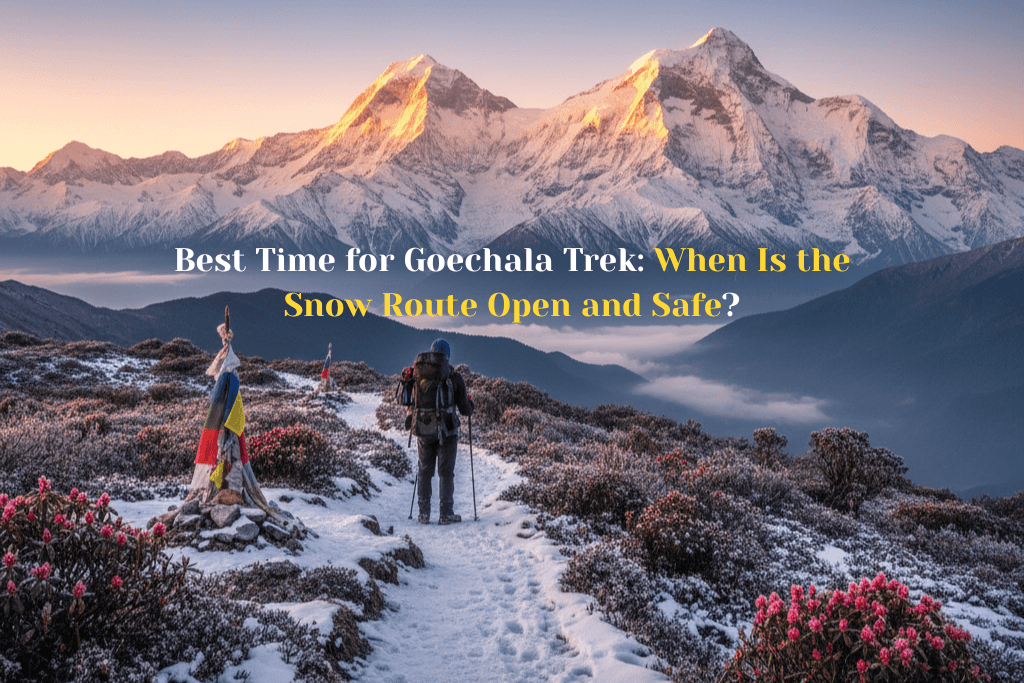The Goechala trek is one of the most sought-after treks in India in terms of the beauty of the Great Himalaya range with the Kanchenjunga. The trek is in Sikkim and provides the adventurous souls with a thrilling feel of trekking at very high altitudes through alpine meadows, Rhododendrons’ forest, glacial meadow. But, the timing should be done appropriately so that the trek becomes safe and enjoyable. This article shall give a clear overview about the most apt times for trekking the Goechala, with the weather, seasons and the climate at places along the way to the Goechala.
Introduction to Goechala Trek:
It would be more beneficial prior to pursuing the advice regarding the optimal time to trek to Goechala, to know what is so unique about this trek. The highest point in the trek is the Goechala Pass, which is located at a level of 16,200 Foot or 4,940 meters. The trek provides a view of the third highest peak in the world, the Kanchenjunga, and the rest of the mountains: Pandim, Kabru and Talung. Besides, through the trek, the green forests and the high altitude lakes, thereby making it an educational and interesting trekking adventure.
Weather and Climate during the Goechala Trek:
The climatic conditions in the Goechala Trek vary with the time since it is hot and the temperature is very cold at high altitude during the trek. There is a chilling wind and sometimes snow during the trek. This means that the timing is greatly weather and climate-dependent throughout the year as is wise to what should be done.
Weather and temperature during the month.
Summer (May-June): Fine weather during the day but the temperature is favorable for the trekkers as compared to October-November,
Monsoon (July till mid-September): Possibility of heavy down pour, trails turn muddy and possibility for landslides is also there.
Autumn (Late September through till November): Optimum for Trekking the blue sky and fresh atmosphere, but the temperature drops gradually day by day and month by month from mid-November becomes very cold.
Winter (December till February): Hiking trails and cold temperatures and where the weather is snow and extremely cold temperatures especially when uphill. And trekking shall be around in this month owing to snow and rough temperature.
March-April: beautiful flowers, especially rhododendrons, and nice weather with neither cloud nor fog in the way of seeing the mountains in the distance.
Best Seasons for Goechala trek
The best time for the Goechala trek at Goechala, would be March through April, this being spring, and late September through November; the autumn. These times provide good weather, less foggy days and so you can be assured with the best views while undertaking the trek.
Why Spring is Best:
All seasons are lovely but the most favorable period for trekking to Goechala is from March till Mid-June as the trail is bordered by flowers like Rhododendrons, magnolias and Orchids. The scenery or vegetation is full of vibrant colours, especially during trekking, you go through beautiful scenary before reaching the pass of Goechala. Spring weather is moderate to warm and dry with average temperature in lower altitudes from 10c to 15c while in the high altitude it is comparatively colder in this period.
Advantages of Spring Trekking: At least TS stand for something here: they represent that something is unchanged, preserved, or at least can be.
All these, in their turn, are some ‘solutions’ that, at least, defend or uphold something.
Floral Bloom: The whole trail is lined with beautiful rhododendron flowers and so it is a treat in itself for the visitors and photography enthusiasts.
It is straightforward hiking during the day thanks to good temperatures although night temperatures are reasonable if dressed appropriately.
Clearer Scenarios: The weather is relatively clearer in the higher altitude areas in which one can view beautiful snow-capped mountains like the highest Mountain Kanchenjunga.
Disadvantages of Spring Trekking:
Higher trails: Most of the trail would be visible; however, the sections of the higher altitude like Goechala Pass would be still snow-clad and thus would be a little risky.
Early Rains: The temperature can start varying during the second half of April especially in the latter half, there may be the first pre-monsoon rains, this is what keeps the terrain slippery in certain areas.
Why Autumn is Best:
There are many best times to trek in the area of Goechala with the best one generally being in the autumnary period. The place is green with vegetation after the monsoon and it strongly contrasts with snow clad peaks against the blue background. The time is also characterized by dry cold weather which is good for trekking but not the harsh winter.
Advantages of Trekking during Autumn:
This is how: However, it is still possible to set forth a list of attributes that identifies professionalism and can be utilized in order to compare with other careers:
Crystal-Clear Scenic Vistas: With the monsoon winds in operation, dust and moisture-free, that is the reason that one can acquire several of the most excellent and most beautiful vistas of the Himalaya mountains.
Nice Temperatures: As such, by day it is quite nice for trekking but nights can be comparatively cold, which is undesirable for this activity.
Stable weather: A big plus point about autumn is that it is less volatile weather-wise, there is no rough, sudden storm, nor any heavy down pour.
There are fewer people: It is possible to hike the trails in spring, but autumns are the second most favorite time of year in tourist arrival terms even if the trails are less populated.
Disadvantages of Autumn Trekking:
Colder Night: The temperature is comparatively moderate in the days but as the days become nights, especially in October and November, the temperature falls dramatically. That is the reason warm clothes and any other accessories become very important.
Shorter days: Autumn is characterized by fewer daylight hours in the course of the day that is less favorable for trekking. This means that one has to set early in the morning so that they can be in the camp sites before dark.
July to Mid-September: Monsoon Season
The second reason that the monsoon is a bad period in which to trek Goechala is that the place is well-known for rains that come during the monsoon period. Sikkim, being in the Eastern Himalayas, gets massive rains during the monsoons and therefore trekking is extremely dangerous. The trails become wet and the terrains become slippery and besides the usual risks of trail hiking such as bumped head, broken bones, getting lost, slippery mountain roads up to the trail head, landslides also become very probable.
Leech Infestation
It is accompanied by water and leeches; these tiny creatures infest all the trails and forests so much so that it is unbearable for trekkers.
Poor Visibility:
The rains and the mist hinder the visibility of the surrounding mountains and that means that you would miss out on the beautiful sights of the mountains that are a feature of the Goechala Trek.
Travel Disruptions:
There are regular landslides during the monsoon, hence clogging the roads that lead towards the starting point of the trek.
Avoiding the Monsoon Season: I needed time for reflection and contemplation during my pregnancy, and I feel that I was able to finally receive that during this period.
The most serious error that can be committed is trekking during the monsoons as a result of safety concerns and slippery and wet trails. In planning your trek, July, August and early September should be avoided.
Winter Season (December through February)
I love winter and it adds a whole new look to each trekking and in the case of Goechala Trek, it gives a completely different view with full snow covering. It is the time for experienced trekkers since they can tolerate cold temperature and snow fall during the trek time.
Why Winter is Challenging:
Trekking up to the Goechala is a completely different affair during winter since it is loaded with heavy snow and especially in the higher reaches, the trek is much tougher. The temperature would be below -20°C in many areas in the higher camps and in all but a handful of months, the trek up to the Goechala Pass would be snowy.
Snowy Trails:
The majority of the sledding area is snow-packed and so deep that it would be tiring for some riders or the riders would be trapped or stuck in deep snow; there are areas along the trail with a very high possibility of having avalanches.
Limited Accessibility: Some section of the trek is closed by snow especially of the higher treks, so even if the trek to Goechala Pass is available you might be unable to finish it.
Advantages of Winter Trekking:
Serene Landscape:
The whole area is snow-covered, which gives it a beautiful look of a winter wonderland. Less Crowded:
It is very unusual to hike during the winter months up to Goechala, so what this implies is that you would be alone on the trail.
Who Should Winter Trek:As a result and as such, Sir, I found myself here and want to be sent back home, the place I was born, the mausoleum.
Only experienced individuals with prior trek experiences in this snow region of the world and with altitude more than 4000m should attempt winter adventure. Also, proper safety gear and clothes and quality trek gear is a must so that one does not expose himself to any danger.
Conclusion: Optimal Time for Trekking Goechala
It would be better to attempt to go to Goechala trek in March-April or September-November depending on permanent ground access/footage condition, climatic conditions during peak seasons and individual experiences. These periods are the most favorable ones as the weather is good, visibility of the surrounding Himalaya mountains is clear and temperatures experiencing which are just right for trekking. Generally, both periods provide a very different and beautiful experience to trek in Annapurna circuit still, those trekkers, expecting clear sky and very good weather should go in the autumn and, on the contrary, those expecting flowers in bloom in the route through should go in the spring.
Avoid hiking during the wet period from July to mid-September since the trail is soggy and you risk getting attacked by leeches or experiencing a landslide occurrence. Winter trekking from December to February is therefore only advisable for experienced trekkers after they have prepared significantly against cold weather and snow conditions. Timing that you choose for trekking in Goechala will not just add the overall experience quotient but assist in avoiding such unfavorable situations that can be risky in this beautiful Sikkim high altitude trek. It is always feasible to have a worth seeing view, any type of plants or just a nice walk in Goechala Trek. As such, I can assure that it is excellent in all seasons and it all comes down to what would one like and would be strong enough to trek.





